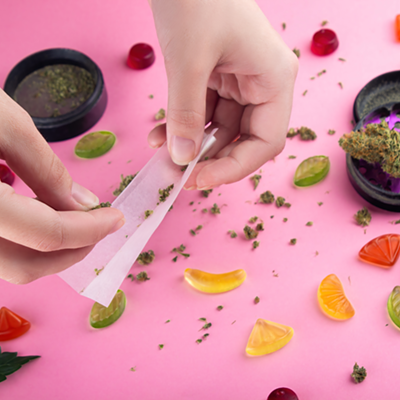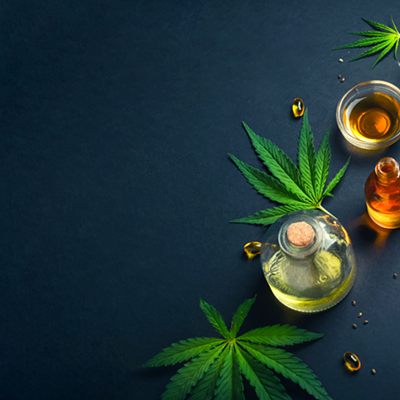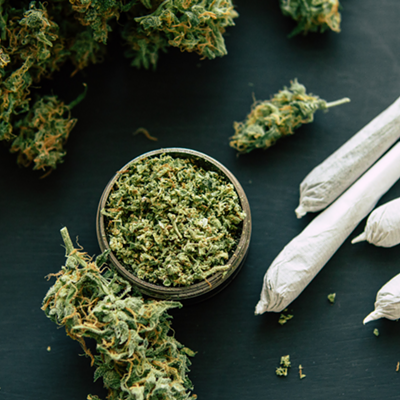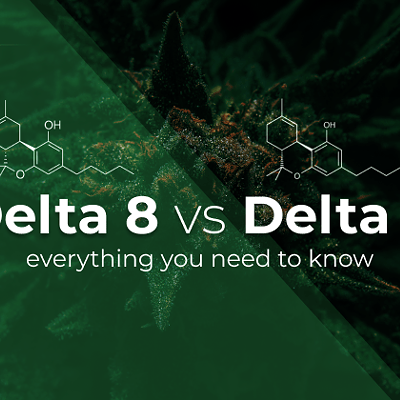Picking the form of cannabis (ie: vape, tincture, capsule, dry leaf, etc.) is just the first step. There are also two species of strains to choose from, plus a list of ingredients with various percentages.
Pittsburgh City Paper visited Lawrenceville dispensary Delta-9 to learn more about medical cannabis labels. Ali Budz, inventory and purchasing manager, and Kaveise Cadogan, marketing manager and patient care consultant, explain what certain ingredients mean and how you can find the best products for your needs.
Species of Strains
Sativa provides a cerebral experience and tends to act as a stimulate, Indica provides a full-body experience and tends to act as a sedative, and Hybrid is a combination of the two. It’s important to note, however, that everyone’s different and these can affect patients different ways. If you want relief, but don’t want to get high, try a 1:1 (pronounced “one to one”) Hybrid, which means it has an equal parts THC and CBD.
If you want relief and a mood booster, Budz recommends the Gorilla Glue strain, a “heavier, more euphoric” hybrid, “where you can still definitely function throughout your day, but you’re going to do it with a little bit more of a smile and a little bit more of a relaxed nature for the rest of your day.”
Gorilla Glue?
Strain names are often nonsensical. Some provide a hint to the flavor or smell (ie: Lime Sorbet), while others are just silly names to get your attention (ie: Gorilla Glue). Choose a product that fits your needs, and don’t base a strain just on its name.Some folks also get attached to a strain once they find something that works for them, but Budz warns not to freak out if one is discontinued. Instead, learn what ingredients in your favorite strain are helping provide relief, so you can identify a comparable product.
Ingredients
Cannabis labels break ingredients down into two sections, Cannabinoids and Terpenes, showing a percentage of each according to product weight. A full percentage is prominent, according to Cadogan. (Lots of ingredients will show up below a full percentage, like “0.145%.”)Cannabinoids are also sometimes listed as “Potency.” These are chemical compounds “that interact with endocannabinoid system receptors in the brain and body to produce various effects,” according to a Delta 9 brochure. This is where you’ll find levels of THC and CBD.
The other section shows Terepenes, “aromatic oils or compounds that contribute to the distinct flavors and aromas,” according to the brochure. “Terepenes also contribute to the medical benefits that are provided by medical marijuana.”
The Cannabinoids and Terpenes work together, and can perform differently depending on the other ingredients and your body chemistry, according to Cadogan. She describes it like finding the best recipe that will work for you, adding you should use descriptions “as a guideline, but not a guarantee.”
Cannabinoids
Some dispensaries only list THC and CBD. Others, like Delta 9, break them down even further, such as THCA and CBDV. Combined, these subgroups make up the full THC and CBD percentage.THC is the ingredient that gets you high. Budz says some labels are as high as 30% THC, but she wouldn’t recommend anything that strong for daytime. “Everyone’s tolerance is different,” she says, adding that even 14% is enough for some. But Budz says getting too high really comes from overconsumption, and that if you “hit your pen once, twice, you should be fine.”
Medical marijuana often makes patients hungry. If you’re looking for relief without stuffing your face, Cadogan recommends THCV, an appetite suppressant.
CBG is “great for gastrointestinal situations,” says Cadogan. It can also stop “tummy butterflies” and help with IBS and Chrohn’s, adds Budz. Look for something high in CBN for pain relief.
Cadogan recommends to “consider the whole label," not just THC. “There might be high THC,” she adds, “but the Terpenes might be what really alter your experience.”
Terpenes
In pain? Try something high in Caryophyllene or Myrcene. Budz also suggests Limonene for a daytime pain reliever, especially if it’s nerve-based pain. Myrcene is the most common Terepene, found in every strain — look for a product with a high percentage for evening pain relief.Pinene is a bronchodilator. If you’re coughing after you partake, Cadogan says it could be the Pinene. “It opens up the lungs,” she says, adding that it’s also a great anti-bacterial.
If you’re dealing with anxiety, Cadogan recommends a strain that is high in Linalool, Terpinolene, and Myrcene. Avoid a product high in Pinene.
Looking for an antidepressant? Try a product with an equal balance of Myrcene, Carophyllene, and Limonene.
Warning
Tell your dispensary and check the label if you have allergies. If you’re allergic to lemon, avoid Limonene. Pine? Avoid Pinene. Black pepper? Avoid Caryophyllene. And some capsules contain coconut oil, so if you’re allergic to coconut, try another form of consumption. “Typically, you will see it’s not going to be an allergic response like an anaphylactic response,” says Budz. “It’s like your immune system starts taking a hit. You might feel like you have an upper respiratory infection that’s lasting just a little bit too long.”
Tolerance
Budz says people can develop a THC tolerance, which means you might need a higher potency, or you might need to take a break.“Three days is ideal because you start to see all neurological impacts of THC really just start to go back to normal,” says Budz. “If you can make it a full month without using cannabis, you are back to square one.” (A month free from cannabis is also the amount of time she says most people will again be able to pass a clean drug test.)
Still confused?
If you still have trouble interpreting the labels, look at your local dispensary’s online menu. Delta 9, for example, provides recommendations based on activities (“Get relief” or “Get some sleep”) or feelings (“Pain free” or “Hungry”).And don’t be afraid to ask your dispensary consultant. “We can definitely go into more of a label deep dive with a patient,” says Budz. “That’s never any trouble. It’s very, very easy to pull it up as we are checking somebody out.”




















